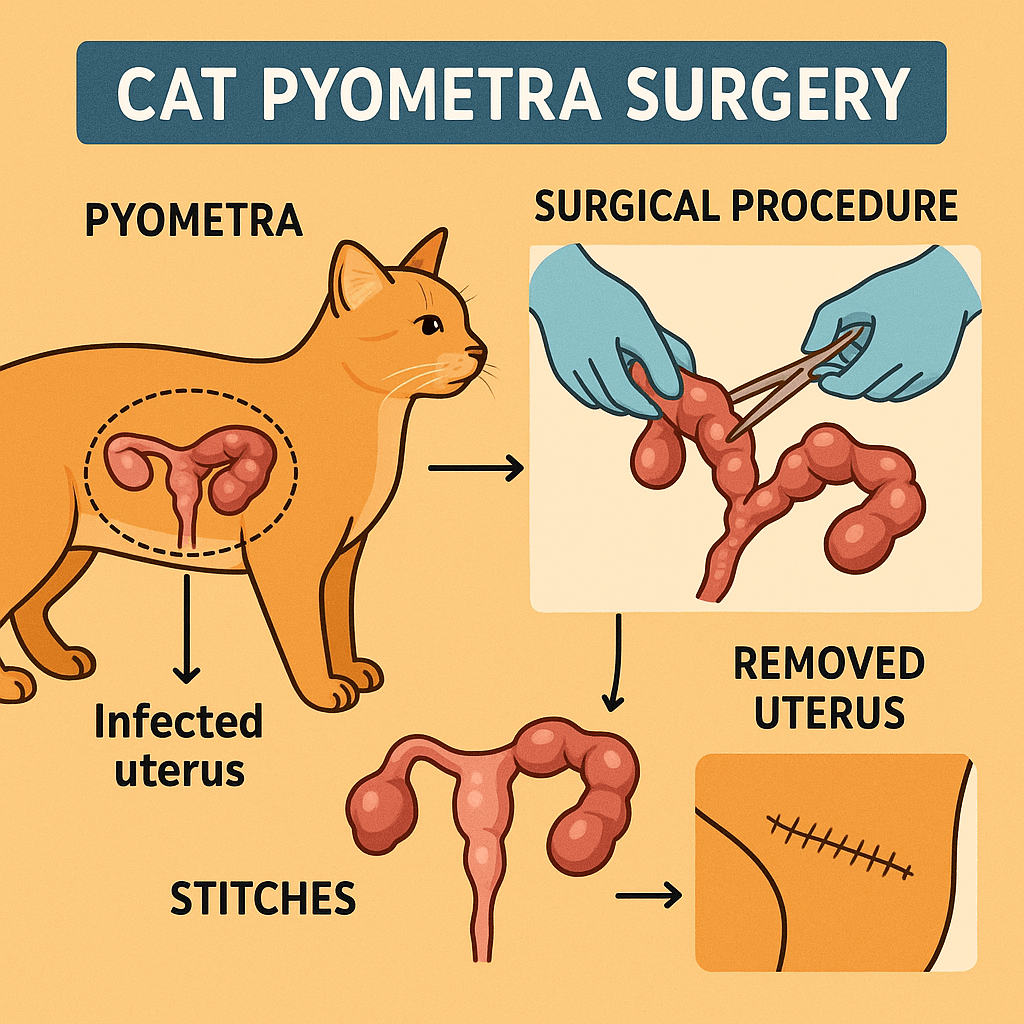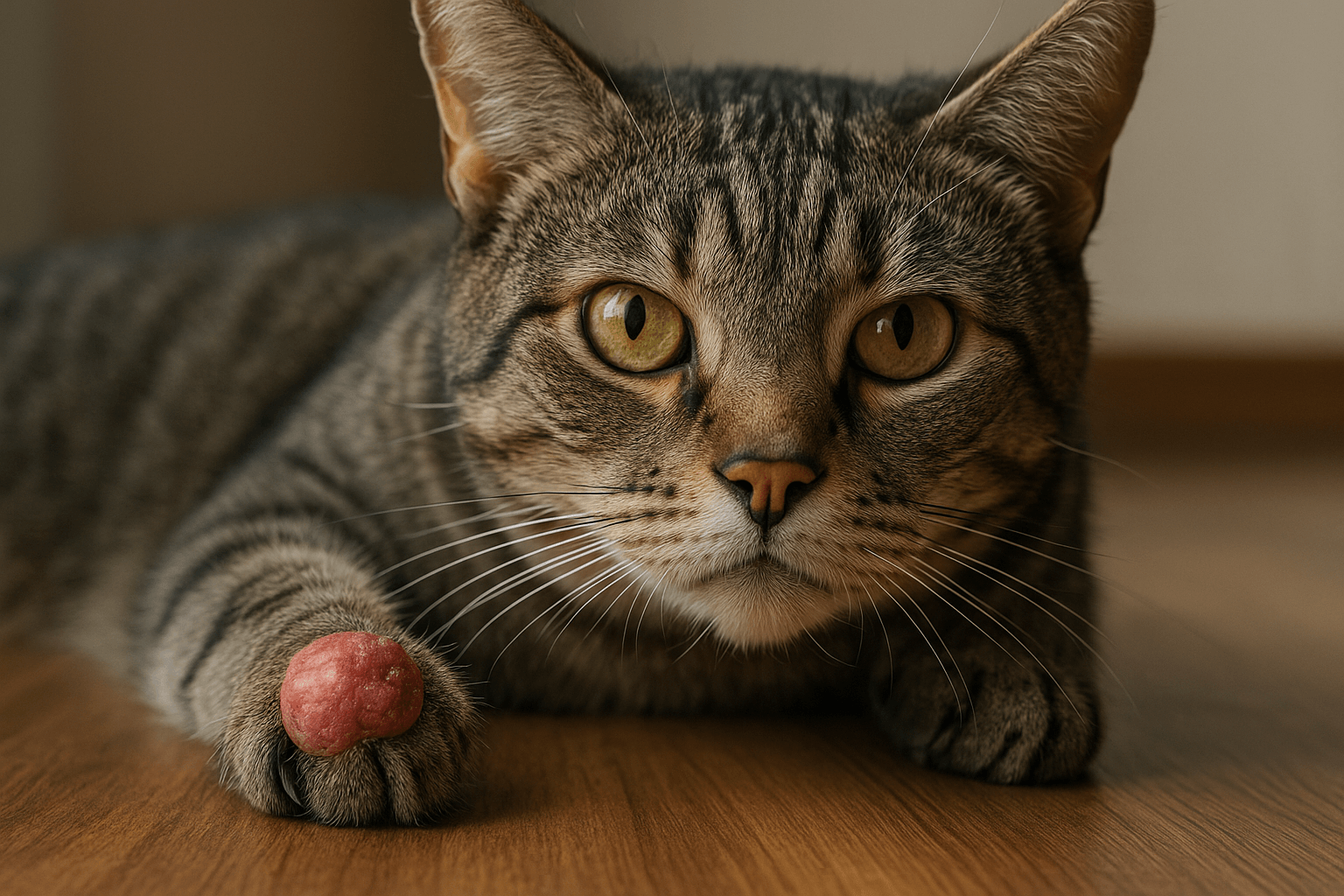Understanding Cat Pyometra Surgery: A Lifesaving Procedure
Pyometra is a serious and potentially life-threatening condition that can affect unspayed female cats. This uterine infection, often caused by hormonal imbalances, requires immediate veterinary attention to prevent severe complications or even death. While pyometra surgery is the most common and effective treatment, many cat owners are unfamiliar with the procedure and what it entails. In this blog post, we’ll explore the causes, symptoms, and surgical process of treating pyometra in cats, as well as tips for post-operative care and prevention. By understanding this critical topic, you can ensure your feline companion receives the best possible care when faced with this medical emergency.
Expert Opinion on Cat Pyometra Surgery
“It is thought to be caused by hormonal changes affecting the lining of the uterus and the presence of bacteria. The most effective treatment method is to perform surgery to remove the infected uterus. There are other options available if the cat is intended for breeding, but these are not as reliable. If prompt diagnosis and administration of treatment are given, prognosis is usually good.”
What Is Pyometra and Why Does It Occur?
Pyometra is an infection of the uterus that typically affects unspayed female cats, especially those over six years old. Understanding its causes and risk factors can help you recognize the condition early and seek prompt treatment.
Hormonal Changes:
Fluctuations in hormone levels after heat cycles can lead to thickened uterine walls, creating an environment where bacteria thrive.Bacterial Infection:
Bacteria, often from the vagina, ascend into the uterus, causing pus accumulation and inflammation.Open vs. Closed Pyometra:
In open pyometra, the cervix remains slightly open, allowing discharge to exit the body. In closed pyometra, the cervix is sealed, trapping pus inside, which poses a greater risk of rupture.Age and Reproductive History:
Older cats or those who have never been bred are at higher risk of developing pyometra due to repeated heat cycles.Delayed Spaying:
Cats that remain unspayed are significantly more likely to develop pyometra compared to those spayed at a younger age.
Recognizing these factors highlights the importance of spaying and monitoring your cat’s reproductive health to prevent this dangerous condition.

The Surgical Process for Treating Pyometra
Pyometra surgery, also known as an ovariohysterectomy, is the primary treatment for this condition. The procedure involves removing the infected uterus and ovaries to eliminate the source of infection. Here’s what you need to know about the surgery.
Pre-Surgical Evaluation:
Your veterinarian will perform blood tests, ultrasounds, or X-rays to confirm the diagnosis and assess your cat’s overall health before surgery.Anesthesia Administration:
General anesthesia is used to ensure your cat remains unconscious and pain-free during the procedure.Removal of Uterus and Ovaries:
The surgeon makes an incision in the abdomen to access and remove the infected organs, preventing further complications.Monitoring Vital Signs:
Throughout the surgery, your cat’s heart rate, oxygen levels, and other vital signs are closely monitored to ensure safety.Post-Surgical Recovery:
After the procedure, your cat will be placed in a recovery area where they are observed for any signs of complications.
This surgical intervention is highly effective in treating pyometra and restoring your cat’s health, provided it is performed promptly.
Check this guide 👉Cat Epilepsy Treatment: Best 7 Health Tips!
Check this guide 👉Cat Incontinence Treatment: Best 7 Expert Tips!
Check this guide 👉How to Treat Cat Depression: Best 7 Health Tips!
Signs of Pyometra in Cats | Steps for Post-Surgical Care |
|---|---|
Lethargy and weakness | Administer prescribed medications |
Loss of appetite | Monitor the incision site daily |
Vaginal discharge (open pyometra) | Prevent licking or chewing the wound |
Excessive thirst and urination | Provide a quiet, comfortable recovery space |
Swollen abdomen | Schedule follow-up vet appointments |
Post-Surgical Care Tips for Your Cat
Proper care after pyometra surgery is crucial for your cat’s recovery and long-term well-being. Following these guidelines can help minimize risks and promote healing.
Administer Medications as Directed:
Antibiotics and pain relievers are often prescribed to prevent infection and manage discomfort. Stick to the recommended dosage and schedule.Keep the Incision Site Clean:
Check the surgical site daily for signs of redness, swelling, or discharge, which could indicate an infection.Prevent Licking or Chewing:
Use an Elizabethan collar (cone) to stop your cat from irritating the incision site during healing.Limit Physical Activity:
Restrict jumping, running, or playing for at least 10-14 days to allow the internal tissues to heal properly.Schedule Follow-Up Appointments:
Regular check-ups with your vet ensure that your cat is recovering well and address any concerns promptly.
By adhering to these care tips, you can support your cat’s recovery and reduce the likelihood of complications.
Preventing Pyometra in Female Cats
While pyometra surgery is effective, prevention is always better than cure. Taking proactive steps can protect your cat from this life-threatening condition.
Spay Your Cat Early:
Spaying eliminates the risk of pyometra by removing the uterus and ovaries before infections can occur.Monitor Heat Cycles:
If you choose not to spay, keep a close eye on your cat’s heat cycles and watch for unusual symptoms.Regular Veterinary Check-Ups:
Routine vet visits help detect potential health issues early, including reproductive tract infections.Avoid Unnecessary Breeding:
Repeated heat cycles without pregnancy increase the likelihood of pyometra. Consider spaying if breeding isn’t planned.Educate Yourself About Symptoms:
Knowing the warning signs of pyometra ensures you can seek treatment quickly if your cat becomes ill.
Taking these preventive measures can safeguard your cat’s health and spare them from the trauma of pyometra surgery.
Risks of Delaying Pyometra Treatment
Delaying treatment for pyometra can have devastating consequences for your cat’s health. Recognizing the urgency of this condition is critical to avoiding irreversible damage.
Uterine Rupture:
A closed pyometra can cause the uterus to rupture, releasing toxic pus into the abdominal cavity.Sepsis and Shock:
Bacterial toxins entering the bloodstream can lead to systemic infection and life-threatening shock.Organ Failure:
Prolonged infection can overwhelm the kidneys, liver, and other vital organs, leading to failure.Increased Surgical Risks:
Delaying surgery weakens your cat’s overall condition, making anesthesia and recovery more hazardous.Higher Mortality Rate:
Cats with untreated pyometra face a significantly higher risk of death compared to those treated promptly.
Acting quickly can mean the difference between life and death for your beloved pet.
Non-Surgical Treatment Options for Pyometra
In rare cases, non-surgical treatments may be considered for pyometra, though they come with significant limitations. Understanding these options helps you weigh the pros and cons.
Antibiotic Therapy:
Antibiotics can temporarily control the infection but do not address the underlying issue of pus accumulation.Hormonal Treatments:
Medications like prostaglandins may help expel pus but are less effective for closed pyometra.Limited Success Rates:
Non-surgical options often fail to resolve the infection completely, leading to recurrence.Risk of Complications:
These treatments carry a higher risk of side effects, such as vomiting or diarrhea, and may worsen the condition.Best Reserved for Breeding Cats:
Non-surgical methods are typically only considered for valuable breeding animals, as spaying remains the gold standard.
While alternatives exist, surgery remains the safest and most reliable solution for most cats.
Emotional Impact of Pyometra Surgery
Dealing with a pyometra diagnosis can be emotionally challenging for cat owners. Acknowledging these feelings and finding ways to cope can help you navigate this difficult time.
Fear and Anxiety:
Learning your cat has a life-threatening condition can be overwhelming. Focus on staying calm and trusting your vet’s expertise.Guilt Over Delayed Diagnosis:
Many owners feel guilty for not noticing symptoms sooner. Remember, pyometra can progress rapidly, and early detection isn’t always possible.Financial Stress:
The cost of surgery may cause financial strain. Explore payment plans or pet insurance options to ease the burden.Bonding During Recovery:
Use the recovery period to strengthen your bond through gentle care and affection.Peace of Mind Through Prevention:
After recovery, consider spaying to prevent future health issues and provide lasting peace of mind.
Acknowledging these emotions allows you to focus on supporting your cat’s recovery and well-being.
Frequently Asked Questions About Cat Pyometra Surgery
How much does pyometra surgery cost?
Costs vary depending on location and severity but typically range from $500 to $2,000.
Is pyometra surgery risky?
While any surgery carries risks, pyometra surgery is generally safe when performed promptly by a qualified veterinarian.
Can pyometra recur after surgery?
No, since the uterus is removed during surgery, pyometra cannot happen again.
What happens if pyometra is left untreated?
Untreated pyometra can lead to sepsis, organ failure, and death, making immediate treatment essential.
How long does recovery take?
Most cats recover fully within 10-14 days with proper care and rest.
Prioritizing Your Cat’s Health Through Awareness and Action
Pyometra is a serious condition that demands swift action to save your cat’s life. Understanding the causes, recognizing the symptoms, and knowing the surgical options available can make all the difference in ensuring a positive outcome. By prioritizing preventive measures like spaying and regular veterinary care, you can protect your feline friend from this painful and potentially fatal infection. Remember, your vigilance and quick response are key to giving your cat the best chance at a healthy, happy life.
Cuterebra Larvae in Cats: Best 7 Expert Tips! – Expert advice on signs, treatment & prevention of this rare but serious feline parasitic infestation.
Cuterebra Larvae in Dogs: Best 7 Expert Tips! – Expert advice on signs, treatment & prevention of this rare but serious parasitic infestation.
Cat Tumor on Paw: Best 7 Expert Tips! – Expert advice on signs, diagnosis, treatment & care for feline paw tumors.
Panacur Side Effects in Dogs: Best 7 Expert Tips! – Safe usage, common reactions & when to call the vet.




